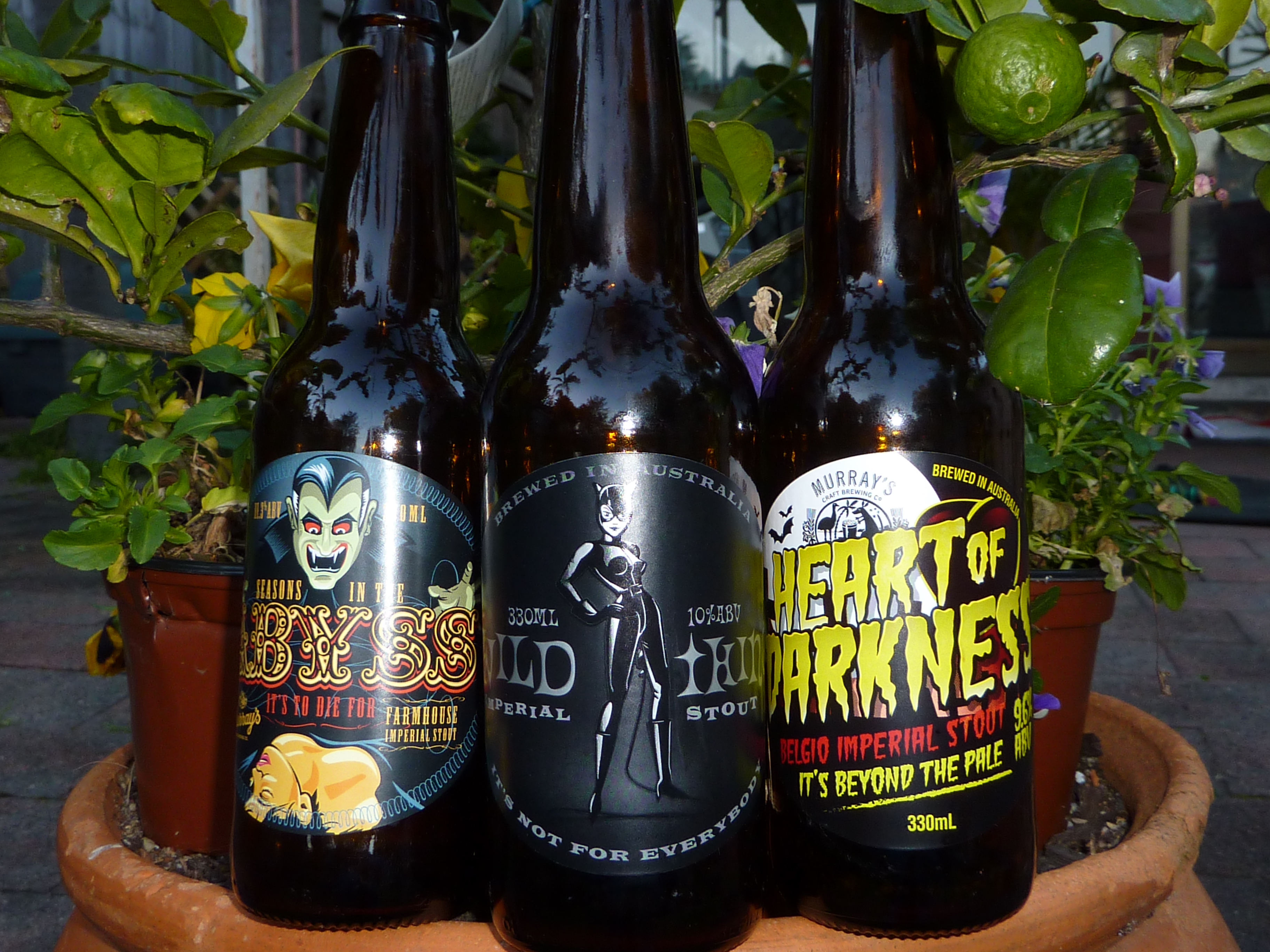Last Updated on September 5, 2013 by stevehoggbikefitting.com

“England has climate. Australia has weather.” So say some English friends of ours who have since moved back to the U.K. This country has been in a 10 year drought of epic proportions which ended last year. Rather than balance being restored, all it seems to have done in my part of the world in 2011 is rain. May has arrived, mid autumn, and while the weather is not cold by European or North American standards, it is colder than normal here. Looking on the bright side, the humidity has dropped enough from summer levels to be able to enjoy some quality dark beers.
A few friends and I decided we should re visit the Rochefort range. We’ve drunk them all before, but never all three on the same occasion. The monks at Rochefort claim that the basic recipe is the same with the only difference being the addtion of more roasted barley malt and hard brown sugar to increase the alcohol levels of the # 8 and # 10 over the #6. Despite that claim, each taste markedly different. With the majority of beers, fresh is best but some serious quality beers are best enjoyed with a few years cellaring. Each of these beers is brewed to be aged for up to 5 years. The older they get, the more mellow and integrated the flavour elements and the more velvety the mouth feel. Speaking of flavour elements, a brief description of each follows below.
# 6 has to be poured with care because of the exceptionally lively near white head. A lot of life in this beer! It is reddish brown in colour and is reminiscent in taste of La Chouffe’s McChouffe Scotch Ale but with more grunt. Alcohol is 7.5% but drinkers unused to beers of this type will be surprised, because the toasted caramel flavours combine to ‘hide’ the strength of this beer. By Rochefort standards, this is the light beer, the quaffer.
# 8 is next in line. Alcohol jumps to 9.2%, colour is a muddier yellow / brown than 6 and flavour increases exponentially. This is a sweet, caramel, velvet, raisiny, monster of a flavour hit with surging, bubbling off white head.. I’m not one for excessively sweet beers but I’ll make an exception for this brew. It is very sweet but the sweetness is not cloying, it just tastes right; particularly on a cool evening. A beer to be sipped slowly and savoured. Again, like many strong Belgian ales, the strength of the beer comes as a surprise because the alcoholic strength doesn’t dominate the flavour at all. A champion winter beer but be careful!
# 10 is the 11.3% top of the tree. More alcohol and more refinement, almost austere by comparison with #8. No less flavour, but easier on the sugar receptors. A drier, less sweet beer than 8, with a dark, dark colour when held up to the light. Again, the high alcohol content is well hidden but the entire vibe of this beer is that it is a ‘warming’ experience. Probably what a whisky chaser is like but much, much more refined and without the throat burn. Not the the thing to drink the night before a race or hard ride. Some 10+% Belgian beers are cloyingly sweet and alcohol can dominate the flavour. Not with this; a masterful effort from monks who’ve had centuries (with plenty of breaks due to war, famine etc) to get it right.
You can enjoy any of these beers quite happily without knowing the others even exist. However, tasting the threesome at one sitting is a bit like meeting a family instead of a single member. The monks at Abbaye Notre Dame de Saint Remy have been brewing these beers since 1595 and based on this recent revisit of the trio, there will still be demand for their beer for a long time to come. Highly recommended. Cool / cold weather only.
Note: Often, more specific answers to your questions can be found in the Comments below or in the eBooks section and FAQ page.
To learn more about bike fit products offered by Steve, click here.
Do you have a bike fit success story? Please go here to share.
Thank you for reading, return to the Blog page here or please comment below.Comments (1)
Comments are closed.







This review is spot on! Thank you… Wonderful beer!